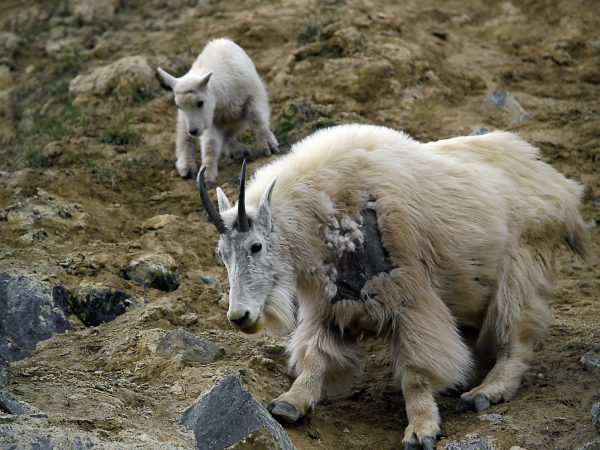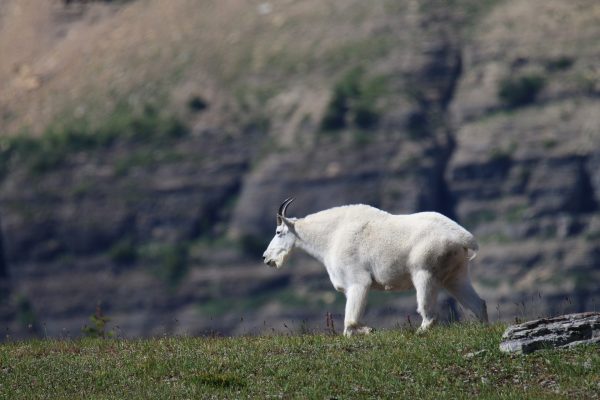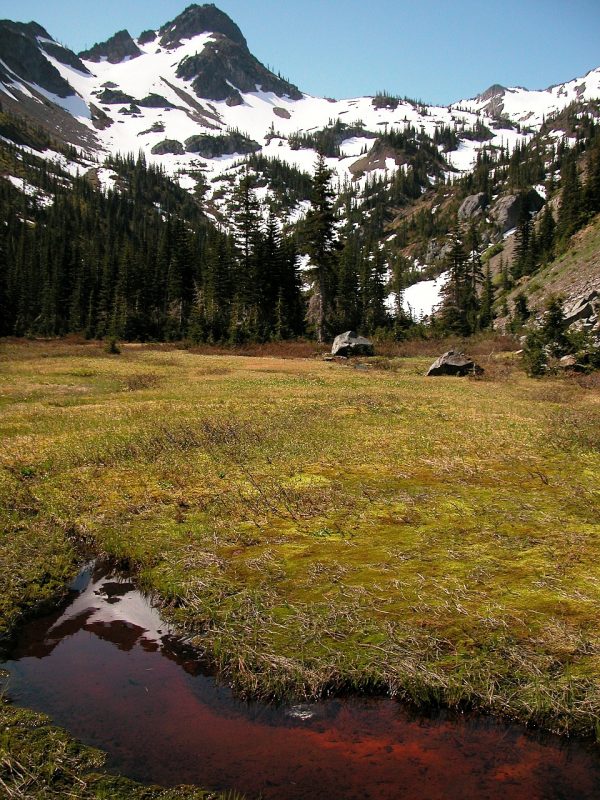Taking on nature: reimagining Olympic National Park
Back in 2010, a wild mountain goat in Olympic National Park in Port Angeles, Washington, gored a 63-year-old hiker so badly that it hit an artery and the man bled to death. The incident brought an old issue back to the forefront of the minds of the locals of the peninsula: something has to be done about the mountain goats.
During the 1980s and 1990s, the park officials of Olympic National Park made moves to remove the mountain goats from the park on the basis that they were destructive to the natural vegetation of the area. The efforts proved fruitless and the goats stayed. Even though the most recent incident was seven years ago, the National Park Service is currently pressing to manage the goats. In fact, in the summer of 2017, they published four plans on goat management. One of these plans and the plan that they would prefer to go with is to capture the goats and relocate them to the North Cascades area, where the mountain goat population has been diminished by hunting.
How the problem started

It does cause one to question how the goats became a problem to begin with. We know that they are native to the West Coast, so if they are naturally there, how did they get so out of hand? The answer is that the mountain goat is not a native animal to the peninsula. What happened was back in the 1920s, only 12 mountain goats were brought to the area by a hunting group. While they were only 12 to start with, they were in the thousands by the 1980s, only 60 years later.
The park had already worked to eradicate the goats through capturing and killing them, reducing the population back down to 300, give or take, in the early 1990s. But the goats are excellent multipliers and their numbers have gone back up, despite the methods that are currently in place. The goat population increases at about 8 percent each year.
The Damage done by the Goats
The obvious issue with the mountain goats is the threat that they pose to humans themselves. With the goats’ natural love of salt, they will follow humans and will approach them to lick the salt from their skin, belongings, or look for salty things within backpacks. They have approached humans once they become isolated from a larger group, like when going to urinate, for example, licking them or being more aggressive in their attempts to get the salty satiation that they crave.

The damage that has been done to the vegetation has not been thoroughly proven. It was thought in the past that they have been directly destructive to the vegetation because they eat and destroy plants that would have been otherwise untouched. The science behind the claims, however, is still shady and would need to be further studied before it could be adequately claimed.
Another concern is simply that the goats are amazing at reproduction. If there were a handful of goats wandering around the peninsula and maintained their own numbers, they may never have been a problem. But goats are excellent at reproducing, making the concern for overpopulation huge.
The Future with fewer goats
The four plans for goat removal are: eradication through killing, relocating to North Cascade, moving the younger goats to live in the zoo, or taking no action at all. The preferred method of relocating them would help the environment of North Cascade where the goat population has been eradicated and it would not draw as many animal rights questions as hunting them from a helicopter would.
If the park can pull it off, they are looking at an added $250,000 to the annual budget, meaning if the funding began to waver at all, the program could easily be cut. Doing nothing is the cheapest option in a way, but if they do nothing at all, the population will continue to increase swiftly.
Rebuilding a Park
Because of the insane number of goats and how they have increased throughout the decades, it can be concerning when hiking through the area. While most of us know what to do in a bear encounter, a mountain goat encounter is simply not the same, though it is also terrifying. The goats do appear soft and adorable on the surface, but letting your guard down and assuming that the animals are safe is a surefire way to find out how exactly they would attack you if they could.

Without the goats there, hikers would not have to worry about sudden goat interactions or attacks. If the goats have indeed been negatively affecting the vegetation of the area, the plant life should have an opportunity to regrow, which may help any other animals that have been suffering while the goats ravage the land.
The new growth in the park may make the landscape more beautiful and bring on a new character that outdoor lovers have previously missed seeing on the peninsula. One of the biggest changes in the park, however, will be that hikers will not have to be in continual fear that any goats will approach them or take them unawares. This will not be the case of course until the project gets underway in the next few years as the park needs to wait to ensure that they have public approval before they proceed with their population control plan.
The biggest question here, however, is how will the numbers stay down? The goats have proven that they have zero issues reproducing and will be able to grow their numbers yet again, even with a population that has been drastically diminished. Hopefully, in the long run, the park officials will find some way to keep the goats from continuing to endlessly multiply to a point beyond which they become a problem. Perhaps hunting would be permitted to help with the population control, but first, let’s get the goats out of there.
If you have any comments then please drop us a message on our Outdoor Revival Facebook page
If you have a good story to tell or blog let us know about it on our FB page, we’re also happy for article or review submissions, we’d love to hear from you.
We live in a beautiful world, get out there and enjoy it. Outdoor Revival – Reconnecting us all with the Outdoors.





